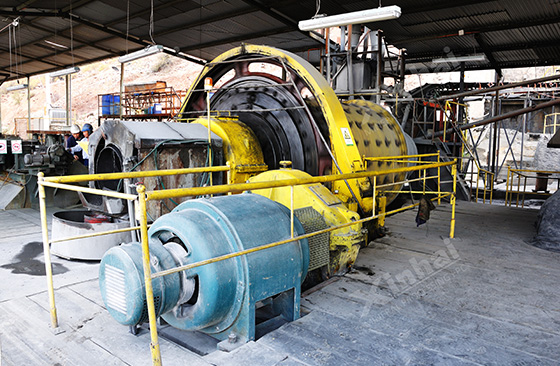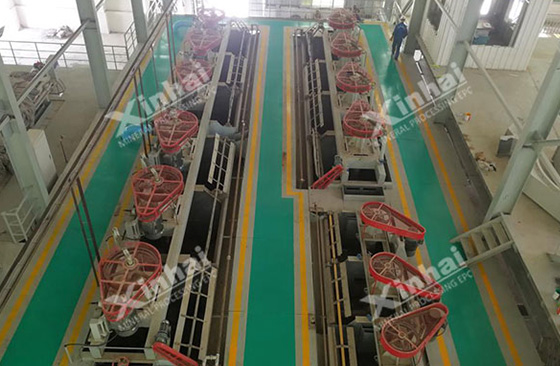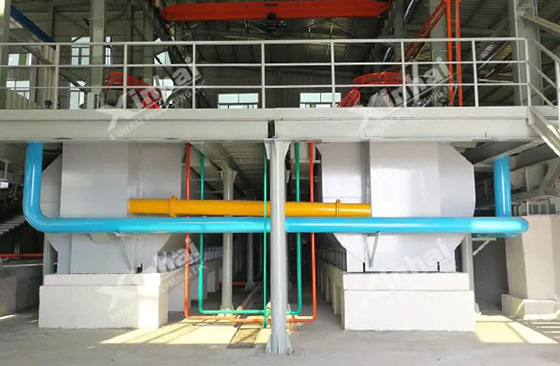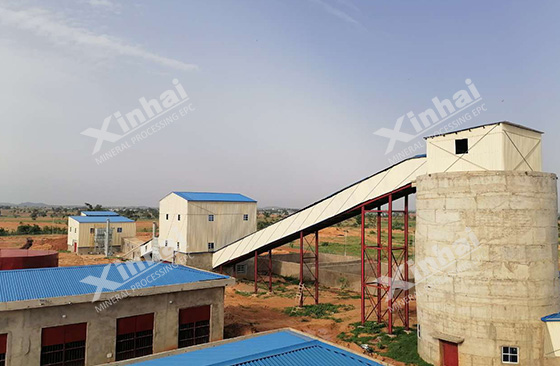
The globalized industry is developing and gradually transforming towards digitalization, intelligence and automation, and the development of copper mines is also gradually developing towards safe, green and efficient intelligent mines. Among them, mineral processing technology and equipment are gradually becoming more refined and efficient, green and low-carbon, with low energy consumption, low emissions and high efficiency in mining production. The technologies currently used in copper minesare mainly combined extraction processes, such as flotation-leaching, cremation chemical treatment-flotation, leaching-chemical sulfidation, etc. Commonly used mineral processing equipment include grinding equipment and large flotation machines. The following will mainly introduce to you the above-mentioned three copper ore joint beneficiation methods.

There are many types of copper mines in nature, and their mineralization conditions and mineral properties are very different. As the ores are mined, the properties of the ores will also change. Therefore, the separation methods and processes of different copper ores are different. of. For example, commonly used separation processes for copper sulfide ores include crushing, grinding, and flotation separation. Commonly used extraction processes for copper oxide include combined methods such as crushing, grinding, flotation separation, heap leaching extraction, and electrowinning. Conventional and easy-to-select copper ores have basically formed efficient and stable mineral processing technology. Most ores can obtain good mineral processing indicators by using a single mineral processing process. However, some difficult-to-select symbiotic and associated minerals are more complicated and have lower taste. For copper oxide ores, it is difficult to obtain ideal beneficiation effects using a single or conventional beneficiation process. Therefore, it is necessary to make full use of the advantages of each process and agent through combined processes or combinations of agents to achieve complementary advantages while achieving good beneficiation effects.
.jpg)
The leaching method is a very practical and effective technical method in the copper mines separation process. According to the different properties of the ore, a suitable leaching agent is selected to selectively dissolve the target minerals in the ore dressing raw ore, so that the target minerals are dissolved in the solution and separated from the gangue minerals. The leaching method is mainly used to process copper oxide ore or mixed copper ore with relatively complex ore properties. Commonly used leaching methods are mainly divided into acid leaching, ammonia leaching and bacterial leaching. Acid leaching is used to treat copper oxide ores with acidic gangue minerals, and ammonia leaching is used to treat copper oxide ores containing a large amount of alkaline gangue or mud. Bacterial leaching is generally used to treat copper oxide ores with low carbonate content or silicate copper oxide ores. Refractory oxide copper mines are also often treated by flotation-acid leaching, ammonia leaching-sulfide flotation, etc.

When dealing with refractory copper oxide ore, the cremation method is used for pretreatment. Malachite and chrysocolla are pre-treated by roasting. You can use sulfide roasting or chloride roasting, which can remove copper oxide crystals from copper ore and fully complete the purpose of sulfidation or transformation. Roasting can also agglomerate fine-grained sludge, reduce its specific surface area, alleviate the adverse effects of sludge on flotation, and facilitate the recovery of target minerals. In order to improve the recovery rate of copper metal, the method of combining sulfidation roasting-flotation and chlorination roasting-flotation is often used to treat refractory oxidized ores.

The leaching-chemical vulcanization method is a comprehensive technology that integrates acid leaching, chemistry, hydrometallurgy and microbial metallurgy. Low-grade copper sulfide ore is naturally piled up in specific locations, and under the combined action of rainwater and bacteria, acidic wastewater with high copper ion content is generated. The obtained wastewater is returned to the ore pile through a pump for spraying, so that the copper content in the acidic water obtained becomes higher and higher. Then a sulfurizing agent is added to the acidic water, and negative divalent sulfur is used to react with the copper ions in the acidic water to form difficult The dissolved copper sulfide is precipitated, and then smelted to recover the copper metal through concentration and separation. This kind of process is simple, can be produced on a large scale and has low production cost.

The above content is a brief introduction to the necessity of using joint beneficiation technology in copper mines and the three joint beneficiation methods. Specific mineral processing technologies should be refined and adjusted based on specific ore properties. Due to the gradual depletion of world copper resources, rapid social development, and green and low-carbon requirements, mining companies should gradually develop in the direction of scale and efficiency. In order to improve resource utilization and reduce energy consumption, the selection of new and efficient copper ore crushing equipment, grinding equipment and flotation equipment is one of the main uses, which can effectively improve the efficiency and economic benefits of mineral processing.
To find out more about our products and solutions, please fill out the form below and one of our experts will get back to you shortly.